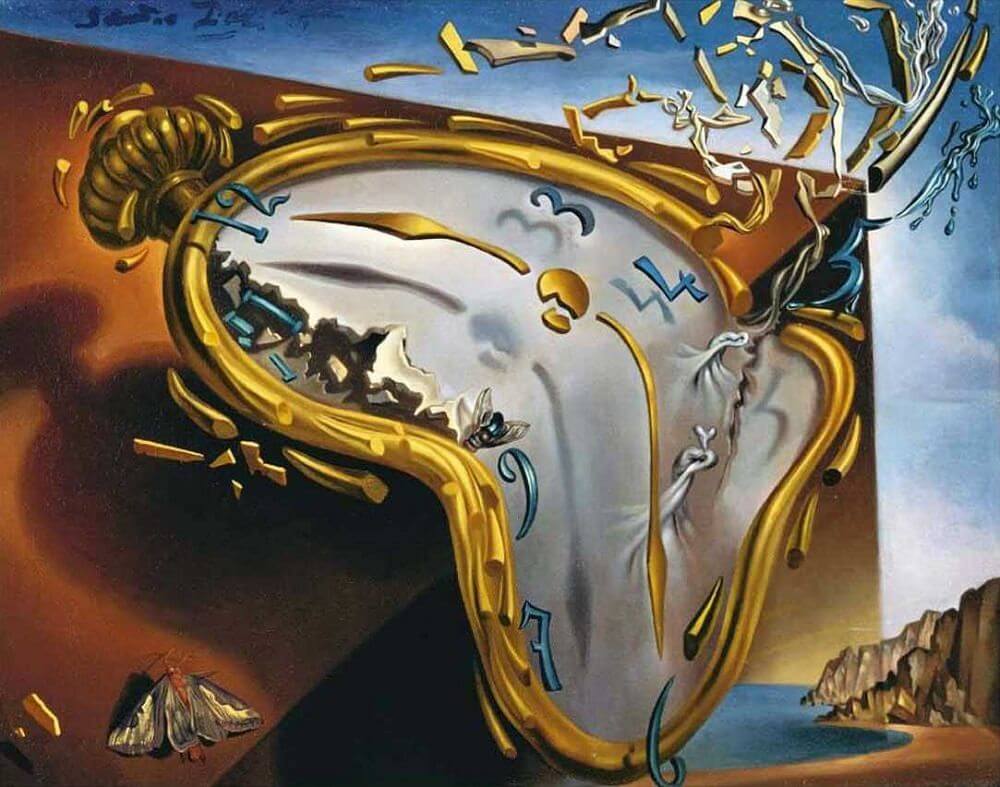Melting Watch, 1954 by Salvador Dali

The Melting Watch, (also known as Soft Watch at the Moment of First Explosion) is an example of this surrealist movement. Created in 1954, Salvador Dali used the presence of a dreamlike quality and ghostly appearance to accentuate the mysterious and unexplainable in his painting.
Surrealism rejects logic, reason and natural order. It uses techniques such as dreamlike or ghostly qualities, juxtaposition (a method for rejecting harmony in their work) and incorporates surreal objects and subject matter. Dali uses these same techniques in this painting to intrigue his viewers and provoke thought.
In his painting, Dali assimilates shadowy outlines of objects and uses the dreamlike quality in the way the watch twists and its broken pieces unexplainably float above it. Also, the ghostly way the watch drapes over one edge of the box as if melting. The watch seems to be pulling apart and stretching. It may denote Dali's belief that time passing brings eventual destruction.
In The Melting Watch, Salvador Dali incorporates a great deal of color juxtaposition. Most of the background consists of deep browns and gold and is contrasted by the white clock in the center of the painting. Dali's painting also displays surreal objects, although most of these are in the foreground (a moth, a fly and a bizarre clock). In the background, we see a small cluster of mountains.























